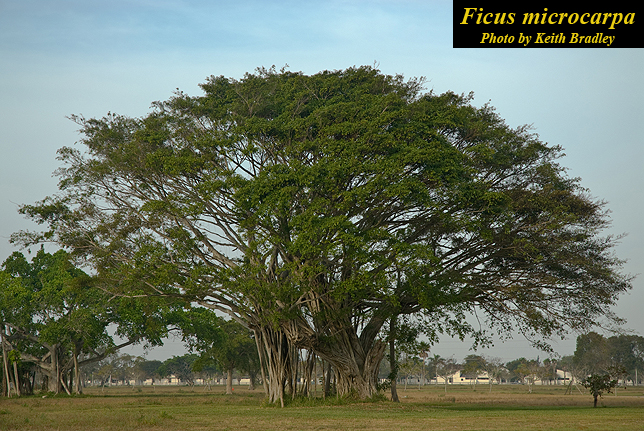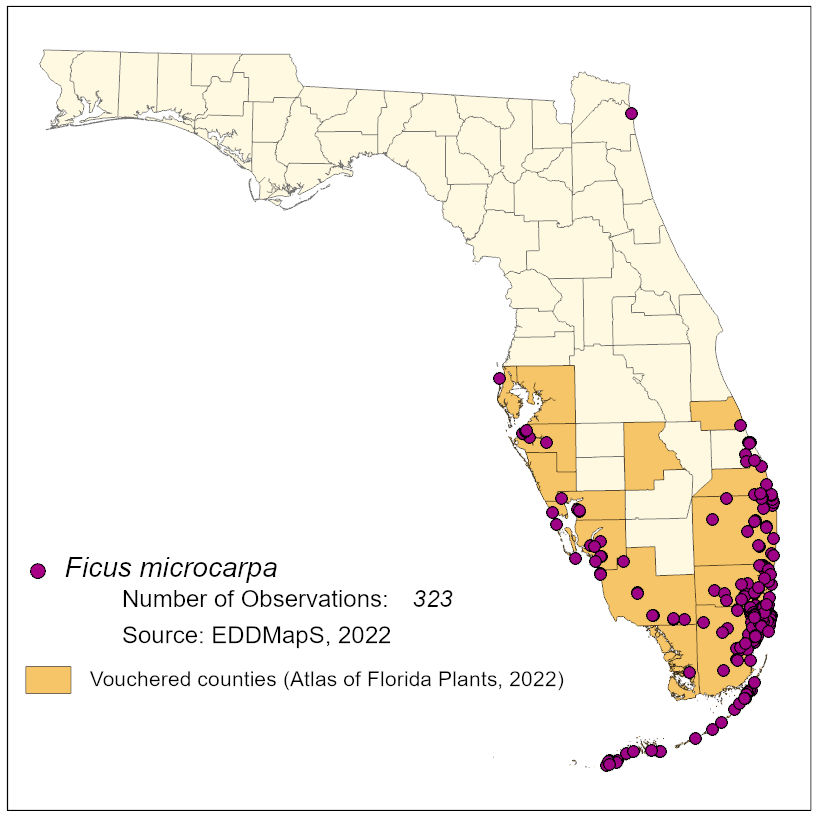Common Name: laurel fig
Family: Moraceae
Common Synonyms: Ficus nitida, Ficus retusa, Ficus thonningii
USDA Hardiness Zone: 9b-11
Growth Habit: Tree
Origin: India, Malaysia, Africa
FISC Category: 1
FDACS Listed Noxious Weed: No
Introduction Date: Pre-1912
IFAS Assessment:

"An evergreen tree up to 15 m tall. Has smooth gray bark, a dense rounded crown, and produces adventitious roots. Leaves are alternate, simple, dark glossy green, are oval elliptic to diamond shaped at 13 cm long, and produce milky sap. Flowers are inconspicuous and hidden beneath the a fleshy, specialized receptacle known as a ""fig"". The fig develops into multiple fruits, in pairs at leaf axils, 1 cm wide, and turn yellow to deep red when ripe. Does not need soil to germinate, and is often found growing in building crevices, sidewalk cracks, or in the boots of cabbage palms. "
Disturbed sites.
Began invading natural areas after accidental introduction of its pollinator, a species specific wasp, in the 1970s. Able to survive in little or no soil.

NA
Langeland, K.A., H.M. Cherry, C.M. McCormick, K.C. Burks. 2008. Identification and Biology of Non-Native Plants in Florida's Natural Areas-Second Edition. IFAS Publication SP 257. University of Florida, Gainesville, Florida.
Langeland, K.A., J.A. Ferrell, B. Sellers, G.E. MacDonald, and R.K. Stocker. 2011. Integrated management of non-native plants in natural areas of Florida. EDIS publication SP 242. University of Florida, Gainesville, Florida.
IFAS, UF. 2015. Assessment of Non-Native Plants in Florida's Natural Areas. Ficus microcarpa. https://assessment.ifas.ufl.edu/assessments/Ficus-microcarpa/ Accessed June 11, 2018.